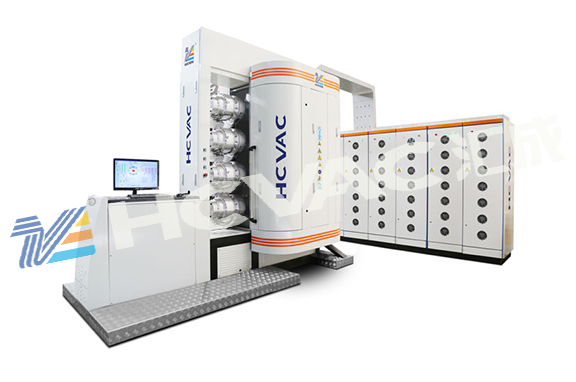In order to minimize the impact of the deformation of the vacuum chamber of the pvd coating machine, we fix the guide rails, screw rods and other transmission parts on a rigid intermediate layer, and adopt point, line and surface active support between it and the bottom wall of the vacuum chamber. In order to absorb and isolate the deformation, and set the deformation compensation adjustment mechanism, before the system is vacuumed, refer to the theoretical data provided by the finite element calculation to preset an appropriate compensation amount to achieve a balance in the vacuum state.

In order to verify the results of the finite element calculation, the deformation and compensation of the vacuum chamber were tested. The first step is to position the four dial indicators on the outside of the vacuum wall at the installation base point of the workbench. When the vacuum chamber is evacuated from the atmosphere to vacuum, record the change of each dial indicator. The collimator adjusts the deformation compensation. The level-adjusted autocollimator emits a laser beam through the glass window of the vacuum chamber to illuminate the mirror fixed on the workbench, and adjust the deformation compensation adjustment mechanism in the atmospheric environment to make the reflected beam enter the autocollimator receiving field of view , Record the two-dimensional angular deviation. Re-adjust the compensation amount under the vacuum state calculated by the finite element (or the first step measurement). Obviously, the reflected beam at this time is far away from the receiving field of view of the autocollimator, but once the vacuum chamber enters the vacuum state, the reflected beam is re-adjusted Enter the receiving field of view of the autocollimator and record the two-dimensional angular deviation at this time. The two-dimensional angle deviations shown before and after are basically consistent.
The lubrication of the motion pair of the worktable and its influence on the vacuum environment. The scanning of the workbench is a frequent movement in the vacuum chamber environment. In addition to rolling instead of sliding to reduce the friction coefficient, good performance is adopted between the motion pairs such as guide rails and screw rods. Lubrication is a necessary condition to ensure the normal operation of the etching device for a long time. The methods of lubrication in vacuum usually include solid lubricating film and direct use of lubricant, which can easily damage the motion accuracy of the guide rail, and the process is complicated. To this end, we tested the lubrication effect of a market commodity-molybdenum disulfide lubricant, sprayed the lubricant directly on the surface of the moving pair, and analyzed the gas volatilized by the lubricant in a vacuum with a quadrupole mass spectrometer. The main ingredient.
The influence of the deformation of the vacuum chamber of the pvd coating machine is huge, which directly affects the service life and coating quality of the
pvd coating machine, thereby increasing the coating cost, and also causing serious losses to the vacuum coating machine. Therefore, this factor is particularly important for everyone. pay attention.



